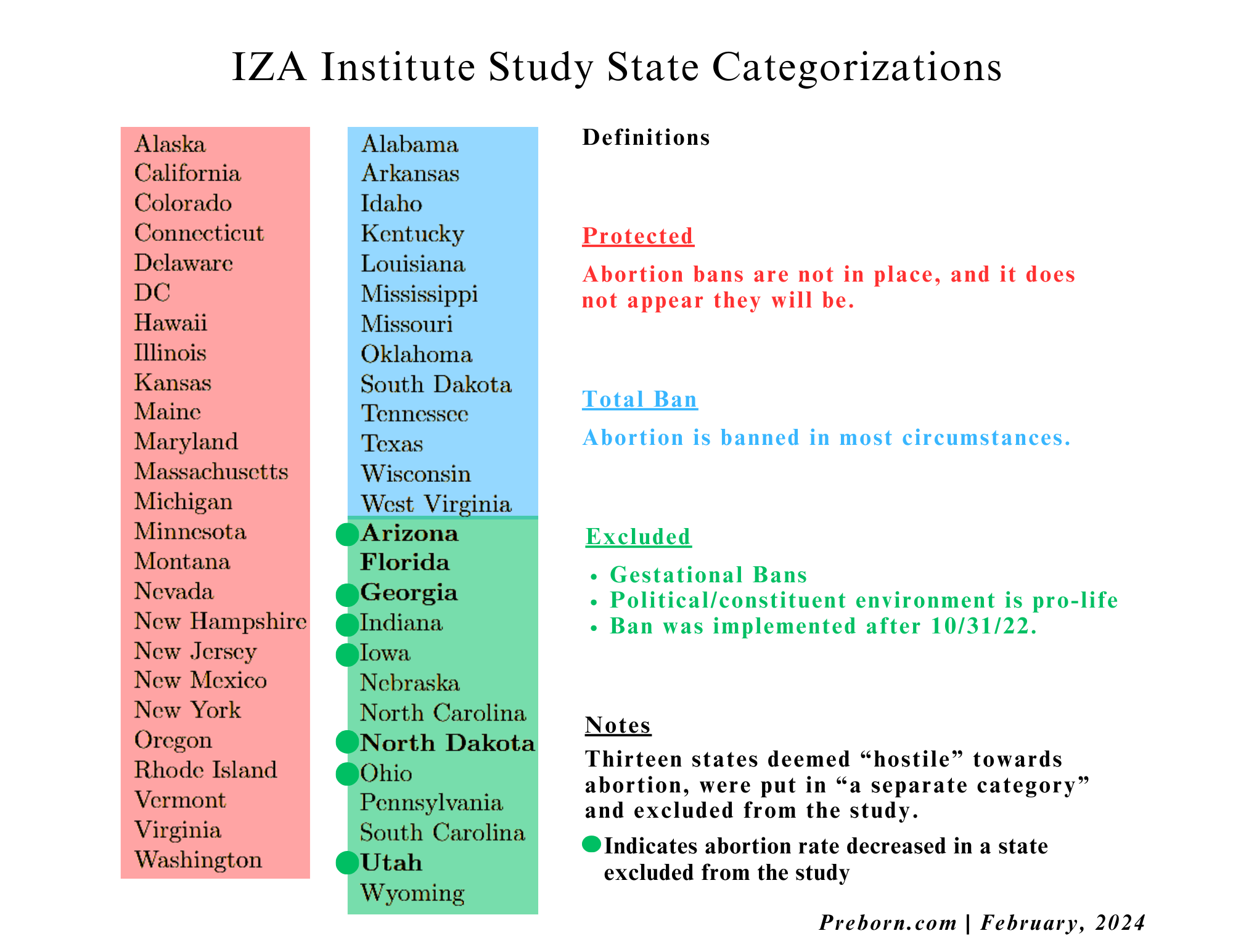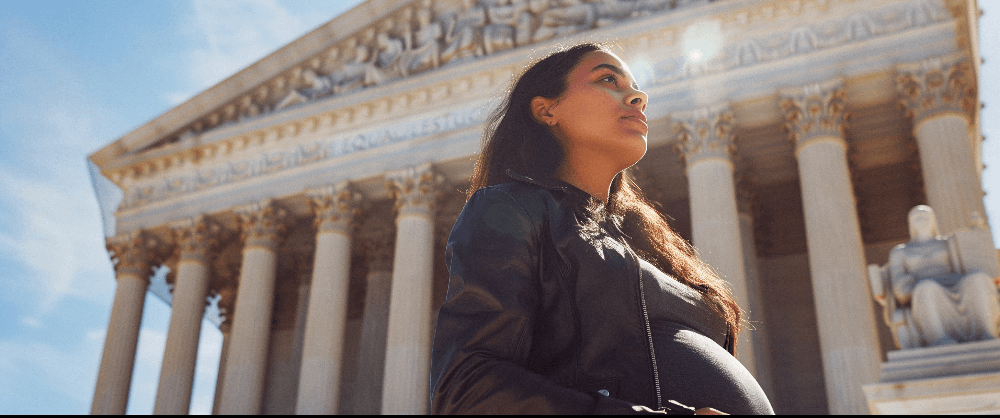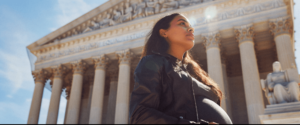In March 2018, the Mississippi State Legislature passed the Gestational Age Act to restrict abortions past 15 weeks’ gestation. It was the most restrictive abortion law in the country at the time.
In response, Jackson Women’s Health Organization, the only abortion clinic in Mississippi, filed a lawsuit in federal district court against the state health officer with the Mississippi State Department of Health.
More than four years later, on June 24, 2022, the Supreme Court ruled that the United States Constitution protects life, liberty, and the pursuit of happiness for both the born and the unborn. In doing so, the Court overturned Roe v. Wade and gave each state the power to determine abortion laws for themselves.
As time marched on, the country held its collective breath, waiting to see how many children would be saved. So where are we now?
Here’s a snapshot:
“The impact of the Dobbs decision is just as devastating as we expected.”
—Amber Gavin, abortion clinic vice president, October 24, 2023, #WeCount Press Release
“US abortion rates rise post-Roe amid deep divide in state-by-state access.”
—The Guardian, October 24, 2023
“Abortions increased the year after Roe was overturned.”
—AXIOS.com October 24, 2023
“65 Abortion Centers Have Closed Since Dobbs, Saving Thousands of Babies From Abortion.”
—Lifenews.com, December 5, 2023
If you are confused, you are not alone.
Just as it took years to decide Dobbs v. Jackson, it will likely take decades to determine the impact.
About the I Z A Institute Study
In November 2023, the I Z A Institute Department of Labor Economics published a 66-page research report titled “The Effects of the Dobbs Decision on Fertility.”
According to the report, “The question addressed in this paper is: to what extent are state abortion bans affecting fertility? . . . We aim to estimate how births are changing in banned states relative to states where abortion access has not been restricted or threatened since the Dobbs decision.”
The abortion landscape is a complex, ever-changing space. To simplify the study, researchers used selected data from the first half of 2023 and grouped states into three categories to represent the legal accessibility of abortion.
Total Ban
States that “enforced bans on abortion under almost all circumstances by the end of 2022” were listed in the Total Ban category.
Protected
The Protected category consisted of “States that have not enacted or enforced a significant abortion restriction since Dobbs and are not viewed as likely to do so.”
Excluded
The Excluded category included thirteen states that “represent late, limited, or restricted access to abortion [as determined by referencing] abortion policy laws and proposals, as well as news articles.” Essentially, it’s states that having late, limited, or restricted access to abortion.
Timing of the Bans
States that “attempted to enact or enforce a ban but did not effectively do so by the end of 2022 [October 31]” were placed in the Excluded category. This includes states where “Although abortion access is not legal anymore in this state, the changes happened late enough not to affect abortion access and therefore births during 2023 [because] the landscape would have prevented access to abortions for a lot of these women.”
Gestational Ban
States that “enacted only a gestational age ban by the end of 2022” were listed in the Excluded category. These states “enacted a pre viability gestational ban at any point through the present and or enacted a total abortion ban after October 2022.” Gestational age limits were “highly restrictive,” but abortion “was not completely banned.” Most states in the Excluded category allowed abortion up to six weeks gestation.
Pro-life Environment
States that “are viewed as hostile to abortion and at high risk of enforcing a ban” were placed in the Excluded category. This consists of states that “have not implemented abortion bans or gestational age limits, [but] their state legislature proposals and decisions around abortion access have been hostile. Therefore, we consider these states in a separate category, because abortion access has been in a grayer area. For instance, the threat of potential bans may result in provider closures or relocations.”
What’s interesting is that data from states in the Excluded category were omitted from the study entirely “because these environments have intermediate effects on fertility.”
The abortion data came from the CDC and the National Center for Health Statistics.
However, the report also discloses that “final birth data for 2023 will not be published until 2024.” To make up for this, the researchers analyzed birth and abortion rates during the first half of five years before COVID. They intentionally omitted birth and abortion rates during the pandemic to eliminate any possible bias.
Through an extensive “power analysis” researchers concluded that, “in the first six months of 2023, births rose by an average of 2.3 percent in states enforcing total abortion bans compared to a control group of states where abortion rights remained protected, amounting to approximately 32,000 additional annual births resulting from abortion bans.”
To summarize, researchers defined the scope of the study using an abbreviated calendar and omitted one-fourth of an ambiguous landscape.
The scope of the project was then married to partially compiled data corrected by historical data from a pre-pandemic reality that no longer exists. This fundamentally flawed union formed the baseline to which they compared our current environment.
From this design, the researchers defined what could have happened if the most significant legal upheaval in fifty years didn’t happen: 32,000 babies that could have been aborted are now learning to walk.
And now, anyone with an interest in the abortion landscape shouts their conclusions far and wide: The impact of Dobbs is negligible.
Analysis of the I Z A Institute Study
The litany of faults inherent with this study begins with the very title of the report, “The Effect of the Dobbs Decision on Fertility.”
No court has the power to impact a woman’s capacity to conceive. Fertility is controlled by biology, which is controlled by God alone.
Another assumption woven in the vernacular of the report is that the Supreme Court demanded that the states choose between total restriction or abort at any stage. The Court did not tell states to either ban or allow abortion. In fact, it’s that very decision from which the Court excused itself.
Instead, the Dobbs decision gave power to the states to decide for themselves. The gray area the I Z A researchers chose to disregard is the very spirit and purpose of the Dobbs decision.
The authors in the I Z A study indicate they obtained data “to estimate how births are changing in ban states relative to states where abortion access has not been restricted or threatened since the Dobbs decision.” However, abortion access is indeed restricted or threatened by the climate, laws, or availability in these excluded states.


The graphic above lists the states in each category. A green dot next to each Excluded state indicates where the abortion rates decreased.
Seven of thirteen Excluded states saw a decrease in abortion.
While the authors claim to estimate the impact of Dobbs, by excluding restricted states, their analysis only hints at the difference between states with total abortion bans versus those with total access.
The decision to exclude states that did not implement abortion bans by October is also problematic. The time and labor for passing a new law are typically lengthy, so most pro-life states included in this study were those with trigger laws.
Also, the report states the research includes states that had bans in place “by the end of the year.” Since Dobbs was decided in June, two months is a significant amount of time to dismiss.
Another reason it is negligent to omit undecided, “hostile” states is the human response. A woman facing an unexpected pregnancy is already overwhelmed, so how many chose life for fear of legal repercussions where undefined laws were in rapid transition?
Any new or modified sentiment, circumstance, or statute since June 24, 2022, that prevents an abortion is a result of the Dobbs decision. All the reasons why one-fourth of the nation was excluded from the study are in themselves arguments for why we must consider them. The list of excluded states should be analyzed with greater interest rather than dismissed.
What Really Happened to Abortion Rates the First Year After Dobbs?
The Society for Family Planning (SFP) is a pro-choice academic society of researchers, clinicians, and educators dedicated to improving sexual and reproductive health. They seek to provide “Just and equitable abortion and contraception informed by science.”
#WeCount is a limited-time reporting effort led by SFP. The #WeCount team documents changes in abortion volumes by state, following the Dobbs ruling. Data is collected monthly, and states are grouped into three categories, states with total bans, bans at six weeks gestation, and states with lesser or no restrictions.
They released an updated report and accompanying press release on October 24, 2023, along with an interactive map.
The subtitle of the report summarizes the study: “While abortions increased overall nationally, nearly 115,000 fewer abortions were provided by clinicians in the 17 states where total or six-week abortion bans were in effect.”
In their report, the SPF researchers described the variation in abortion access across the country in three ways: total bans, protected, and “unclear,” however, no state was left behind.
The report is clearly written to report births and abortions reported within the formal health system regardless of the political environment.
The recurring theme is that where births increased in ban states, abortions increased in protected states.
Compared to the pre-Dobbs months, the monthly average number of abortions in the 12 months post-Dobbs was, on the one hand, much lower in states that banned abortion, on the other hand, much higher in states that did not ban abortion, than would have been expected if pre-Dobbs rates of abortion had remained consistent. Nationally on average, there were 82,115 abortions per month in the two months prior to the Dobbs period, compared to 82,298 in the post-Dobbs period.
In the 12 months after Dobbs, an estimated 94,930 fewer abortions were provided in states that had banned abortion.
In a follow-up to the #WeCount report, The Guardian published “US abortion rates rise post-Roe amid deep divide in state-by-state access” on October 24, 2023. The article describes the dichotomy between births and abortions as symptomatic of the “deep divide in abortion access in the US.”
The Guardian included a map of the US with colored arrows to illustrate the extent to which abortion rates either increased or decreased in each state.
The first illustration includes all three categories from the I Z A study:
- Red arrows: These represent Protected states
- Blue arrows: These represent Ban states
- Green arrows: These represent states excluded from the I Z A study
- Arrows pointing down: These indicate a decrease in abortion
- Arrows pointing up: These indicate an increase in abortion


In the second map, the arrows in the Protected and Ban states are still red and blue, yet states excluded from the I Z A study are treated as “hostile” to abortion and with “limited access.”
It’s amazing to see that the overwhelming majority of the United States is pro-life.


A Pro-Life Perspective of the Year After Dobbs
So, is Dobbs actually saving lives?
Is the fight really worth it?
With over 94,000 babies saved from abortion, according to the study above, NOW is the time to keep going and never give up in our fight for life.
If you are considering abortion, or if you are reeling from the trauma of abortion, know that you are never alone. Jesus loves you and values your life more than His own. We’d love nothing more than to show you His love and healing.
No matter where you read, two things are clear: abortion bans save lives, and our work here at PreBorn!, is far from over.
We’d love to have you join us in the fight to save babies and save souls.











